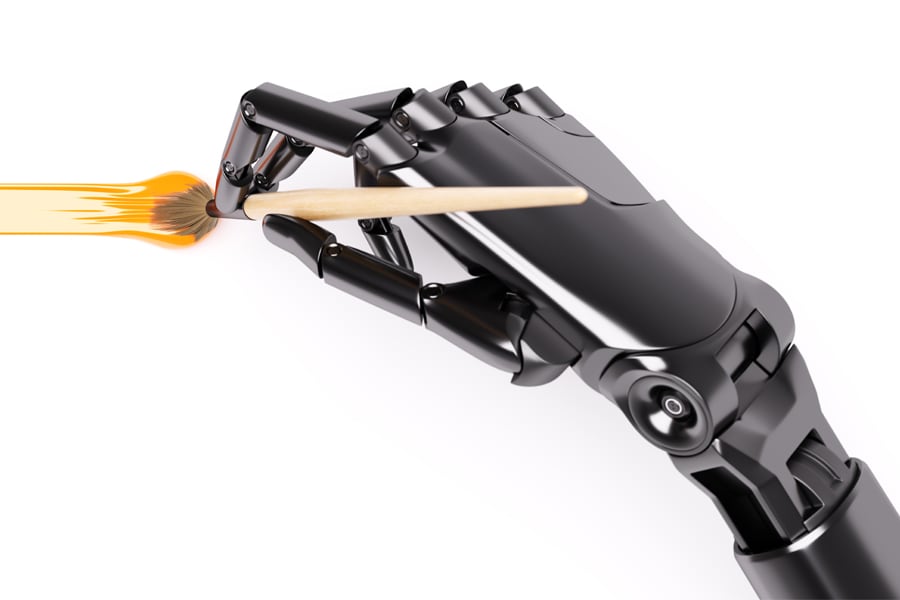
When AI takes on the role of an artist
If artificial intelligence is pushing the limits of creative human expression further than ever, it still requires commands or prompts from a real person to create
 Artificial intelligence is now able to create any image from a textual prompt in a few seconds. Image: Shutterstock
Artificial intelligence is now able to create any image from a textual prompt in a few seconds. Image: Shutterstock
Artificial intelligence is increasingly carving out a place for itself in the visual arts. Software is now able to generate images from a simple sentence or a series of prompts. The results are striking, but the use of such programs raises many questions about the future of creation and creativity. We look at the phenomenon in our latest After Calendar, our trend book for 2023.
In 1901, American architect Frank Lloyd Wright gave a speech in Chicago on the role of the machine in the creative process. He explained that “its function [was] ultimately [to] "emancipate human expression." A century later, this “machine” takes the form of artificial intelligence (AI). It is capable of creating any image from a textual description – text prompts – in a few seconds. Would you like to see the English naturalist Sir David Attenborough fighting a polar bear with his bare hands? Or American-Canadian actor Dwayne Johnson meeting his alter ego, The Rock? It's now possible thanks to software such as Midjourney, DALL-E 2, Imagen, DreamBooth and Stable Diffusion.
These tools use language understanding and learning models on huge quantities of data to generate images from a line of text. Google explains that it trained Imagen on LAION-400M, a database of 400 million images associated with written captions found on the internet. This is where the artificial intelligence gets its "inspiration." It then generates several illustrations corresponding to a request or prompt – for example, a teapot with muscles – by reducing image noise in a cluster of pixels of random colors (denoising). It is this "diffusion" technique that makes the current image generating software so successful.
Since June, DALL-E 2, Midjourney and company have seen their popularity skyrocket on social networks, largely thanks to the sometimes realistic and sometimes grotesque visuals they produce. Some illustrate fairly vague concepts like blockchain or joy, while others respond to very specific requests (like "quails listening to angry parents at a school district board meeting"). Generative artificial intelligence software is capable of responding (more or less successfully) to any request sent by a user, as long as it doesn't go against its moderation policy. For instance, OpenAI, the company behind the DALL-E program, prohibits the generation of violent, pornographic or political images, and prevents the creation of "photorealistic" illustrations, especially of public figures. DALL-E would thus refuse to imagine a fight between Donald Trump and Vladimir Putin.
Also read: Subodh Gupta's giant utensils take over glitzy Paris store







